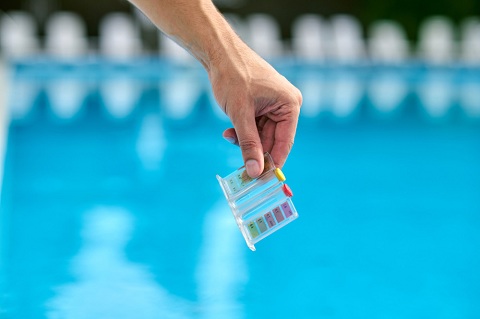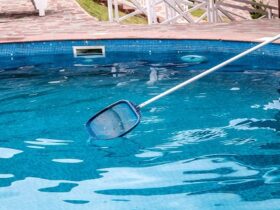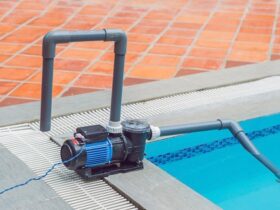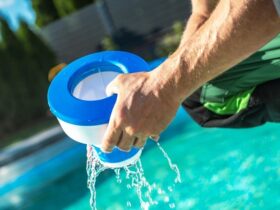Maintaining a pristine, crystal-clear pool is the dream of every pool owner. The cornerstone of achieving this dream lies in understanding pool maintenance secrets, especially knowing the perfect time to shock your pool. This comprehensive guide delves into the essential aspects of pool shocking, ensuring your pool remains a sparkling oasis.
Understanding Pool Shocking
What Is Pool Shocking?
Pool shocking, also known as super chlorination, is the process of adding a significant amount of chlorine or non-chlorine chemicals to your pool to eliminate contaminants. These contaminants include bacteria, algae, and chloramines that regular chlorination might not fully eradicate. The goal is to raise the free chlorine level to a point where it can effectively destroy all unwanted substances.
Why Is Shocking Your Pool Important?
Shocking your pool is crucial for several reasons:
- Eliminates Harmful Contaminants: Regular pool use introduces various contaminants, from sweat and urine to oils and cosmetics. Shocking neutralizes these substances, ensuring the water remains safe for swimmers.
- Prevents Algae Growth: Algae can quickly turn a beautiful pool into a murky mess. Regular shocking helps keep algae at bay.
- Maintains Water Clarity: By removing organic contaminants, shocking helps maintain clear and inviting water.
- Improves Chlorine Efficiency: Shocking breaks down chloramines, which are compounds formed when chlorine combines with organic matter. Chloramines can cause eye irritation and a strong chlorine smell. Removing them restores chlorine’s effectiveness.
When to Shock Your Pool
After Heavy Use
Heavy pool use introduces more contaminants into the water. If you’ve had a pool party or a large number of swimmers, it’s wise to shock your pool immediately afterward. The increased load of sweat, body oils, and other substances necessitates a thorough cleaning.
After a Rainstorm
Rain can carry pollutants into your pool, such as dirt, debris, and even algae spores. Additionally, rain can dilute your pool’s chlorine levels, reducing its effectiveness. Shocking your pool after a rainstorm helps restore the proper chemical balance and eliminates any introduced contaminants.
When Algae Is Visible
If you notice any algae growth in your pool, it’s time to shock. Algae can spread rapidly, turning your pool green and unsafe. Shocking eradicates algae spores and prevents them from taking hold.
At the Start and End of the Swimming Season
Shocking your pool at the beginning of the swimming season helps prepare it for use, ensuring all contaminants that may have accumulated over the winter are eliminated. Similarly, shocking at the end of the season helps clean the pool before closing it down, making the reopening process smoother.
After Chemical Imbalance
A chemical imbalance can make your pool water unsafe. If your routine water tests show high levels of combined chlorine (chloramines) or a low free chlorine level, it’s time to shock the pool. This action corrects the imbalance and restores a safe swimming environment.
Regular Maintenance Shocks
Even without visible signs of contamination, regular maintenance shocks (every 1-2 weeks) are advisable. This proactive approach keeps your pool consistently clean and safe.
Types of Pool Shock Products
Calcium Hypochlorite
Calcium hypochlorite, commonly known as cal hypo, is a powerful and cost-effective pool shock. It’s available in granular form and is ideal for routine shocking. However, it can raise calcium hardness levels, so it’s essential to monitor your pool’s calcium levels when using this product.
Sodium Hypochlorite
Sodium hypochlorite, or liquid chlorine, is another popular pool shock option. It’s easy to use and highly effective. Liquid chlorine does not increase calcium levels but can raise the pool’s pH, necessitating pH adjustments.
Potassium Monopersulfate
Potassium monopersulfate, a non-chlorine shock, is excellent for those who want to avoid chlorine’s strong smell. It’s gentle on swimmers and effective in oxidizing contaminants. Non-chlorine shock is particularly useful for regular maintenance shocks.
Dichlor
Dichlor, a stabilized chlorine shock, contains cyanuric acid, which protects chlorine from being degraded by the sun’s UV rays. It’s ideal for pools exposed to significant sunlight. However, excessive use can lead to high cyanuric acid levels, which can reduce chlorine effectiveness.
How to Shock Your Pool

Step-by-Step Guide
- Test the Water: Before shocking, test your pool water to determine the current chlorine levels and pH. The ideal pH for shocking is between 7.2 and 7.4.
- Calculate the Amount: Follow the manufacturer’s instructions to calculate the correct amount of shock product based on your pool’s volume.
- Prepare the Shock: If using granular shock, dissolve it in a bucket of water before adding it to the pool. This step prevents undissolved granules from settling on the pool floor and causing damage.
- Distribute Evenly: Pour the shock solution around the perimeter of the pool to ensure even distribution. For liquid chlorine, pour it directly into the pool water.
- Run the Pump: Run your pool pump for at least 8 hours to circulate the shock thoroughly. This step ensures the chemicals are evenly distributed and effective.
- Retest the Water: After 24 hours, retest your pool water to ensure chlorine levels have returned to a safe range (1-3 ppm).
Safety Precautions
- Wear Protective Gear: Always wear gloves and eye protection when handling pool chemicals.
- Avoid Swimming: Do not swim in the pool until chlorine levels have returned to a safe range.
- Store Chemicals Safely: Keep pool chemicals in a cool, dry place, away from direct sunlight and out of reach of children.
Conclusion
Understanding when to shock your pool and how to do it properly is essential for maintaining a clean, safe, and inviting swimming environment. Regular shocking not only keeps contaminants at bay but also enhances the overall efficiency of your pool’s sanitizing system. By following these guidelines and using the right products, you can ensure your pool remains a pristine oasis all season long.










Find Us on Socials